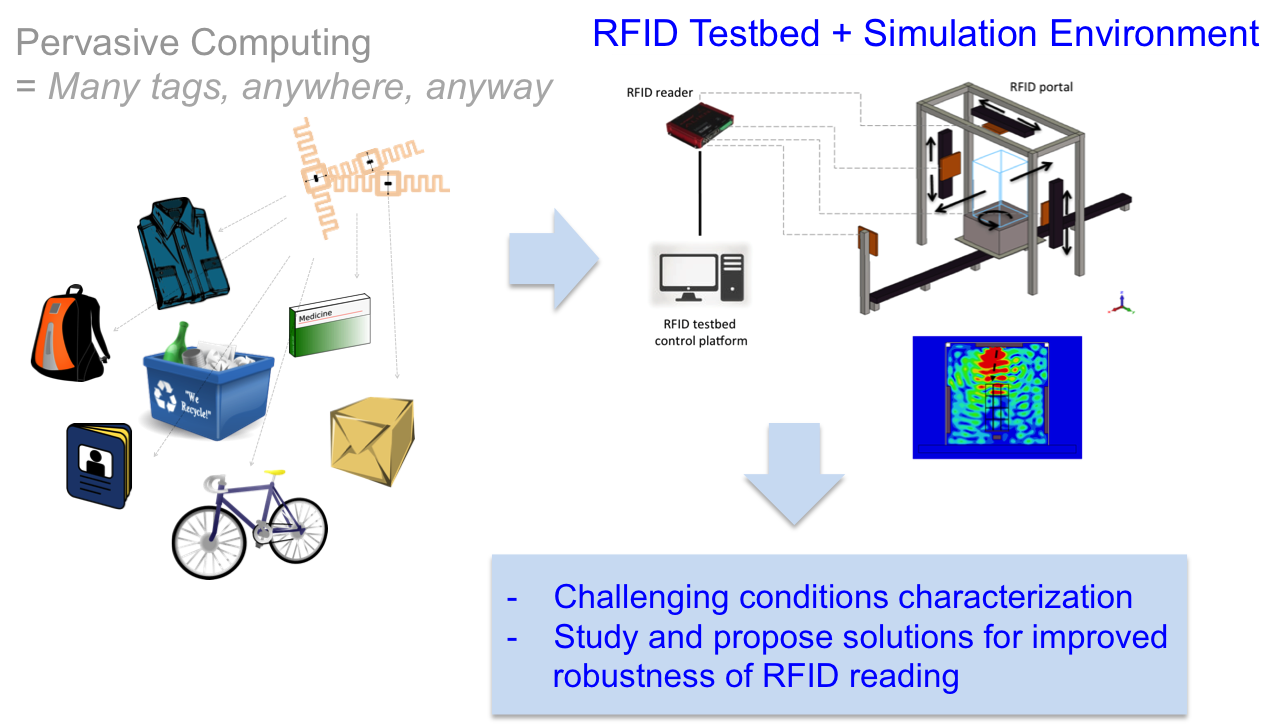Pervasive (or Ubiquitous) computing is a vision where computing and real world are tightly merged, eventually giving to every of objects and places a digital role. The vision is becoming a reality thanks to several technological revolutions : 1) Internet ubiquity, 2) Progress in smart embedded devices, such as smart sensors and RFID chips. RFID chips are small, passive, and very cheap, making it possible to attach them into almost anything: books, clothes, packages, etc. Although very limited, RFID allows objects to interact with a device using short-range wireless communication.
Among the pervasive computing community, the TACOMA team has been exploring the “physical approach”, where data structures and computing processes are directly hosted and supported by physical objects and their interactions, instead of relying on a remote information system. These ideas enable new application scenario for RFID, fully in line with the emerging trend of the Internet of Things (IoT).
In this context, some limitations of existing RFID technology become challenging: unlike standard RFID application scenarios, pervasive computing often involves uncontrolled environment for RFID, where tags and reader have to operate in much more difficult situations that those usually encountered or expected for classical RFID systems.
IETR has a strong expertise in antenna design and radio signal behaviour. The collaboration between IETR and TACOMA will likely help to:
- Identify and characterize the key challenges in terms of RFID radio design that affect application performance in the pervasive computing approaches explored by TACOMA,
- Study solutions to overcome these challenges, or mitigate their impact,
- Broaden the perspective of current antenna design by considering innovative application context from the pervasive computing domain.
The consortium involves the following people and teams : Michel Banâtre, Paul Couderc, Frédéric Weis (Inria) and Sylvain Collardey, Ronan Sauleau, Ala Sharaiha (IETR).

